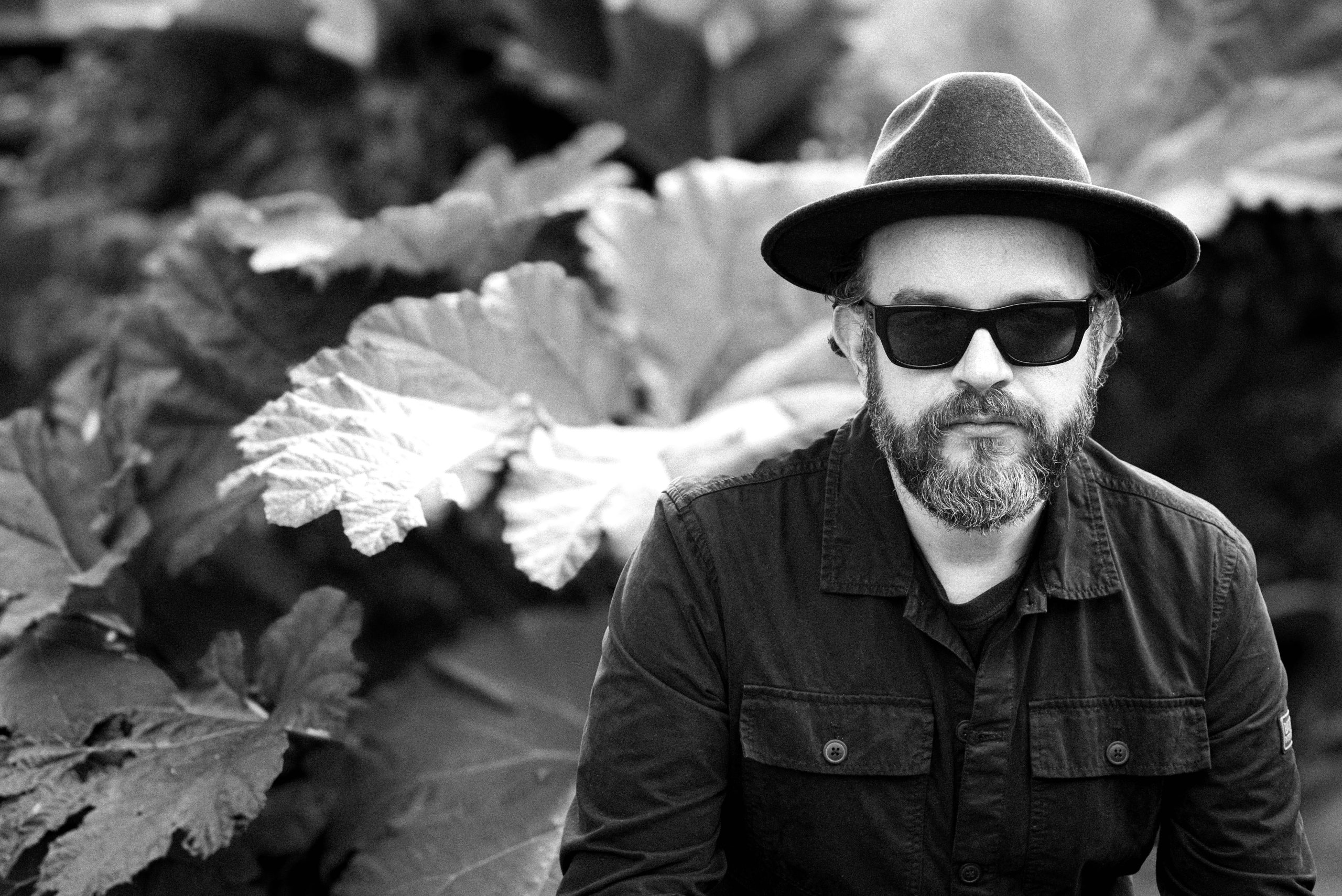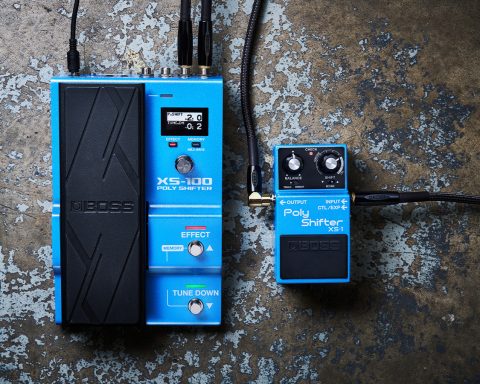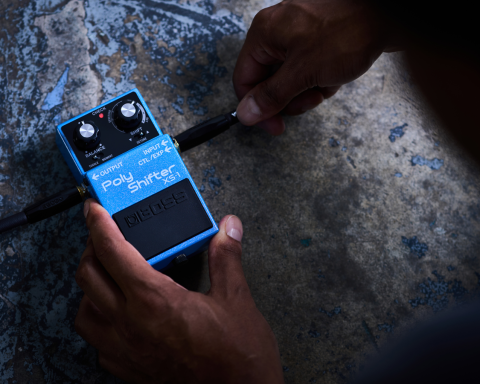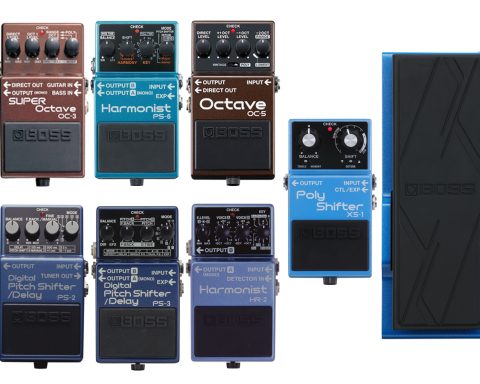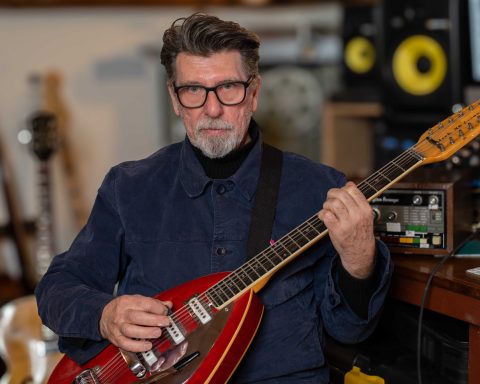“I was obsessed with Black Sabbath and Queen as a kid,” Tom Dalgety recalls as we delve into the beginnings of his lifelong passion for rock music. Though he was encouraged to take classical guitar lessons at the tender age of eight, it wasn’t until a few years later that the instrument truly resonated with him. A life-changing moment occurred when he first plugged into an amp at his local music shop, Sounds of Frome. The visceral experience of loud, distorted electric guitar was like a bolt of lightning. “That was a turning point for me,” he tells us. “Suddenly, all the riffs I’d learned to play on an acoustic sounded right.” Inspired by Tony Iommi and Angus Young, he soon acquired an SG. This was followed by his first pedal, a BOSS TU-2 Chromatic Tuner.
Frustration to Inspiration
Dalgety’s first band recorded twice, but frustration with limited studio time pushed him to invest in home recording gear, starting with a four-track cassette recorder and later upgrading to a Fostex VF16 16-track digital recorder. A session with producer Steve Evans (Robert Plant, Proclaimers, Siouxsie Sioux) at Nam Studios in Wiltshire solidified his desire to pursue a career behind the board, beginning as an assistant engineer and learning the ropes.
“Steve and I got on great. I loved spending time in the studio, and that really cemented my feelings about wanting to be a producer,” Dalgety says. “I soon got to know other local studios, so I would get recommended when bigger acts came to record.”
“After Royal Blood, I’ve been able to work with many of my favorite bands, including The Cult, Pixies, and Ghost.”
A Turning Point
As Evans’ protégé, doors opened to sessions with notable producers like Steve Osborne (U2, New Order, Happy Mondays) and John Leckie (Pink Floyd, The Stone Roses, Radiohead). After further refining his craft at Rockfield Studios, Dalgety established his own facility on Bath’s Lower Bristol Road, where he mixed the bulk of Royal Blood’s self-titled 2014 debut album.
Topping charts on both sides of the Atlantic, the LP’s breakthrough success was pivotal for the up-and-coming producer. “Until then, I’d just engineered, so the album’s success was a turning point,” Dalgety confirms. “After Royal Blood, I’ve been able to work with many of my favorite bands, including The Cult, Pixies, and Ghost.”
Dalgety’s ever-expanding list of credits is remarkable—from long-established bands like The Damned, Killing Joke, and Opeth to newer acts such as Creeper, Tigercub, and Turbowolf.
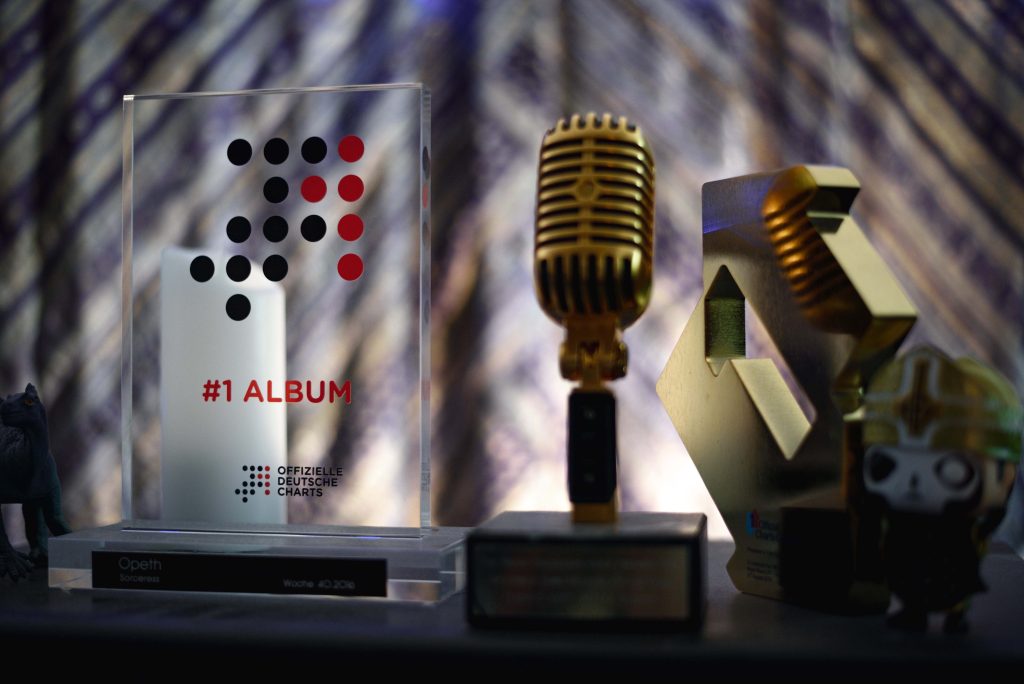
We caught up with him at his West Country home studio, fittingly located in the heart of an old graveyard. Here, Dalgety has recorded and mixed some of rock music’s finest, and BOSS gear has always been close to hand. The super producer reflects on his career and shares rare insights on using BOSS pedals in the studio.
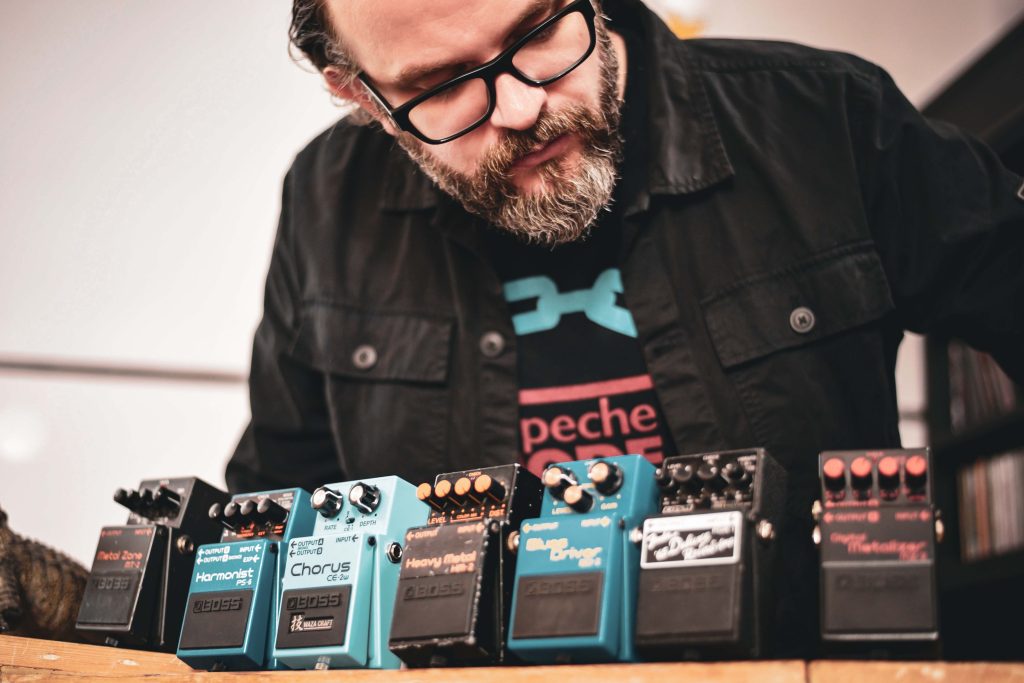
In Pursuit of Royal Tone
Which BOSS pedals did you use to record Royal Blood?
The BOSS LS-2 Line Selector pedal is crucial to Mike Kerr’s live setup. He used three effects chains, two of which would be turned on and off using the Line Selector. That enabled him to perform in his own unique way. In the studio, you can chain effects any way you want, but we recorded using his live rig, with him turning effects on and off throughout the song. So, when you hear his sound change on the record, know he’s doing that with his feet.
Mike likes the PS-6 Harmonist a lot. That’s what you hear on “Ten Tonne Skeleton” from Royal Blood.

You can really hear Mike playing the BOSS Harmonist on that song. There’s a nice mix of it I did that’s on the new ten-year anniversary Royal Blood release. Also, I put some of Mike’s vocals through a BD-2 Blues Driver on that album. Mike also used BOSS gear for Royal Blood’s second album, How Did We Get So Dark? I remember we got a great tone with an AC-3 Acoustic Simulator by running his bass through it into an overdriven amp. It gave the sound a weird, cool midrange crunch.
Outboard Motor
Do you use BOSS pedals as outboard?
Radial makes a guitar effects interface called the EXTC 500 that allows you to use a pedal as outboard. It takes a line level down to high impedance, then back again. I sometimes use it with ProTools to put the bottom snare mic through a BOSS BD-2 Blues Driver. Many other gain pedals obliterate the signal, but the Blues Driver enhances the exact harmonics I want from the bottom of a snare. I did that on the first Pixies album I worked on, Head Carrier.

I’ve tried using a lot of fancy outboard gear for distortion, but there’s something magical about using a pedal. It’s more in-your-face, and the transient comes through nicely. You come across many happy accidents when experimenting with pedals in the studio, like things clipping accidentally that sound really good. It’s interesting to send a very hot signal into a Blues Driver. The BD-2 sounds nice on bass, too.
"I’ve tried using a lot of fancy outboard gear for distortion, but there’s something magical about using a pedal."
Sonic Pixie Dust
Which BOSS pedals did you use to record Pixies’ Head Carrier?
I used the HM-2 Heavy Metal on bass for that album—you can easily hear that on the track “Baal’s Back.” Because of its name, people often associate the Heavy Metal pedal with that genre, but you can also use it in subtler ways. David Gilmore used a BOSS HM-2 and a Big Muff—both of which can produce a nice overdrive sound if you dial back the distortion. I like using the HM-2 as a mild overdrive.
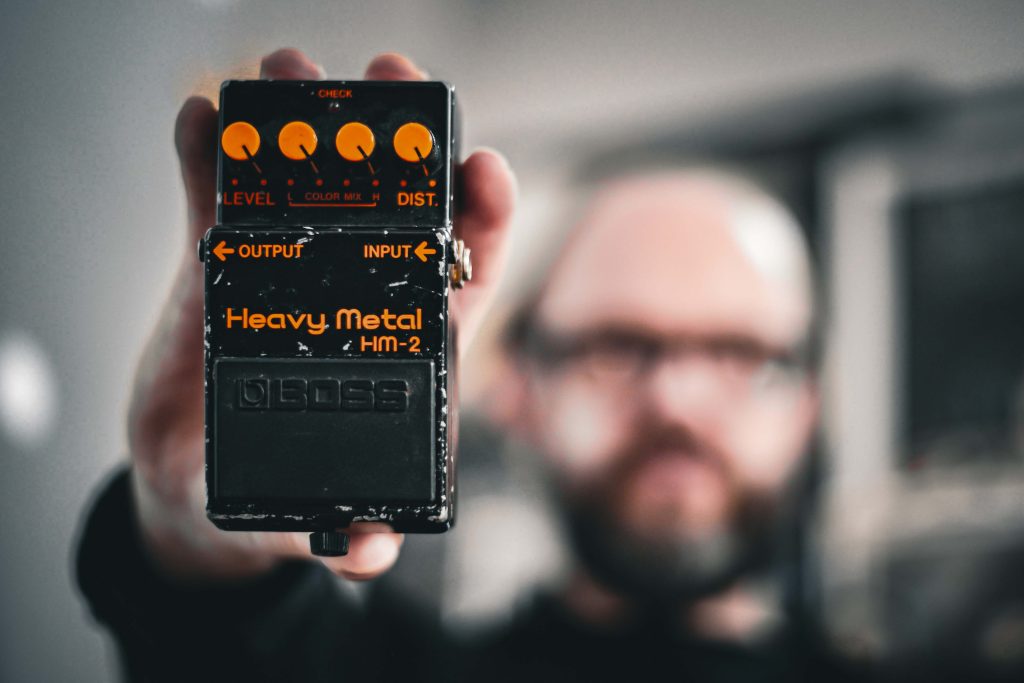
I also like using the HM-2 as a Rangemaster-style treble booster by turning the high frequencies up with the H Color Mix knob and the distortion down to about ten o’clock. That’s great going into an old Marshall Plexi amp. Plexis often require brightening, plus you need to push them quite hard to break up, and the HM-2 does both those jobs nicely. It really tightens and brightens sluggish amp heads. They become more responsive beasts, and you can get more grit out of them. The classic Swedish chainsaw setting with everything on max is also cool, depending on the amp used. It has a little bit of a fuzz character to it.
Which BOSS pedals did you use to record Pixies’ Doggerel?
I remember using a DD-3 Digital Delay. Joey Santiago and I ride the feedback of delays while he’s playing to get those spacey sounds with the echo spinning off. The first song of the Doggerel album, “Nomatterday,” has that kind of thing going on. In fact, the album starts with the sound of a BOSS DD-3 Digital Delay.
Joey Santiago owns a BOSS FZ-2 Hyper Fuzz; did you use it to record?
We’ve used the Hyper Fuzz lot. Some of the Pixies’ album, The Night the Zombies Came, was recorded at Rockfield, but we didn’t have much time there, so I set up their live rigs. Usually, the pedal and amp situation would be more bespoke, but we treated it like a radio session.
I always presumed the FZ-2 would only be good for synthy, resonating lead sounds, as Joey uses it for the most white-hot parts of the Pixies’ live sets. But in that session, we used it mainly for chordal work. It’s amazing in the boxy-sounding mode with the Gain knob backed off. They say, “Don’t judge a book by its cover,” but I say, “Don’t judge a pedal by its name.”
“They say, 'Don’t judge a book by its cover,' but I say, 'Don’t judge a pedal by its name.'”

You’ve been dubbed the “Fifth Pixie.”
Yeah! That feels very strange. I do loads and loads of pre-production work these days. I try to with every band now. It’s about ensuring everyone’s as prepared as possible before hitting the studio, whether that’s making sure individuals know what they need to be playing or working on song arrangements.
With Pixies, it’s mainly done in Black Francis’ front room. I’ll go to his house and record demos to iron out parts and arrangements. I like to separate the creative and scientific aspects of recording, broadly speaking, so that when I’m in the studio focusing on mic phasing or whatever, I don’t have to start thinking about songwriting suddenly.
Chasing Ghosts
When did you get involved with Ghost?
I’ve been a fan of Ghost since day one. I remember a friend sending me a link to their Myspace, and I loved it. I wanted to listen to it again and again. I loved the drama in the music, and it had the perfect amount of humor. The first Ghost album, Opus Eponymous, came out in 2010, but I remember hearing the demos, so it must have been earlier than that.
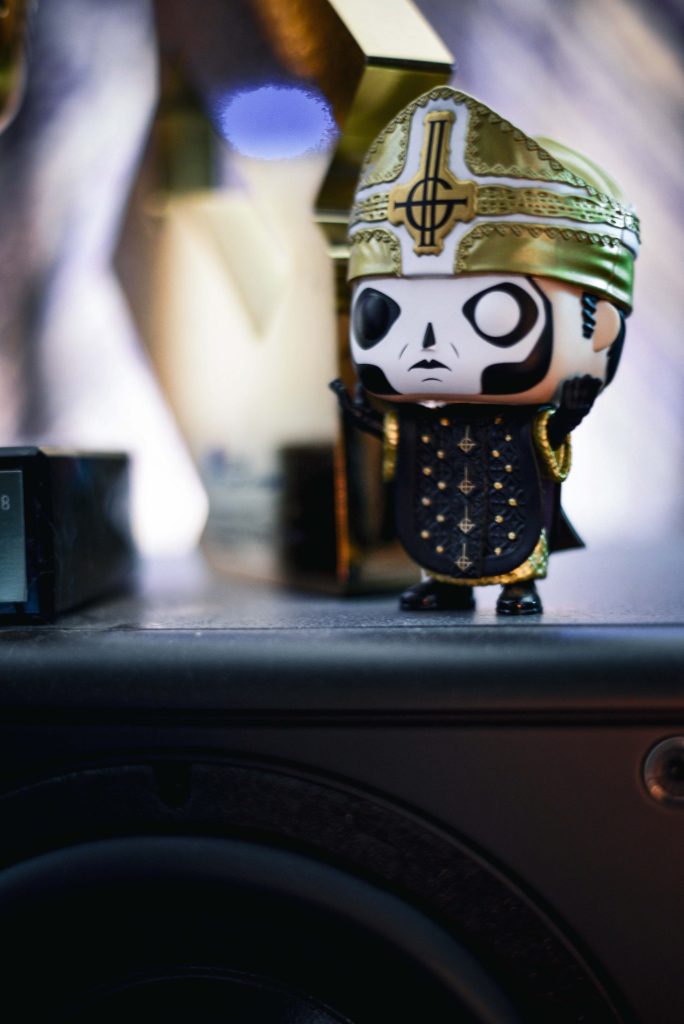
Having been a fan for years, I eventually got an opportunity to do a test mix of the track “Cirice,” which went on to win a Grammy in 2016. I agonized over the mix before sending it in but didn’t get the gig. Andy Wallace got it instead—which I can totally live with, as he’s a hero of mine. Shortly after that, Ghost contacted me again to produce an EP titled Popestar comprising four covers and an original track called “Square Hammer.”
The “Square Hammer” single exploded in America and topped the Billboard charts. It was the first time Ghost made a punchy, compact pop song. It was like the primary colors of Ghost distilled into a radio banger. The rest of the EP sounds great, too. We covered Eurythmics’ “Missionary Man” and Echo & the Bunnymen’s “Nocturnal Me.”
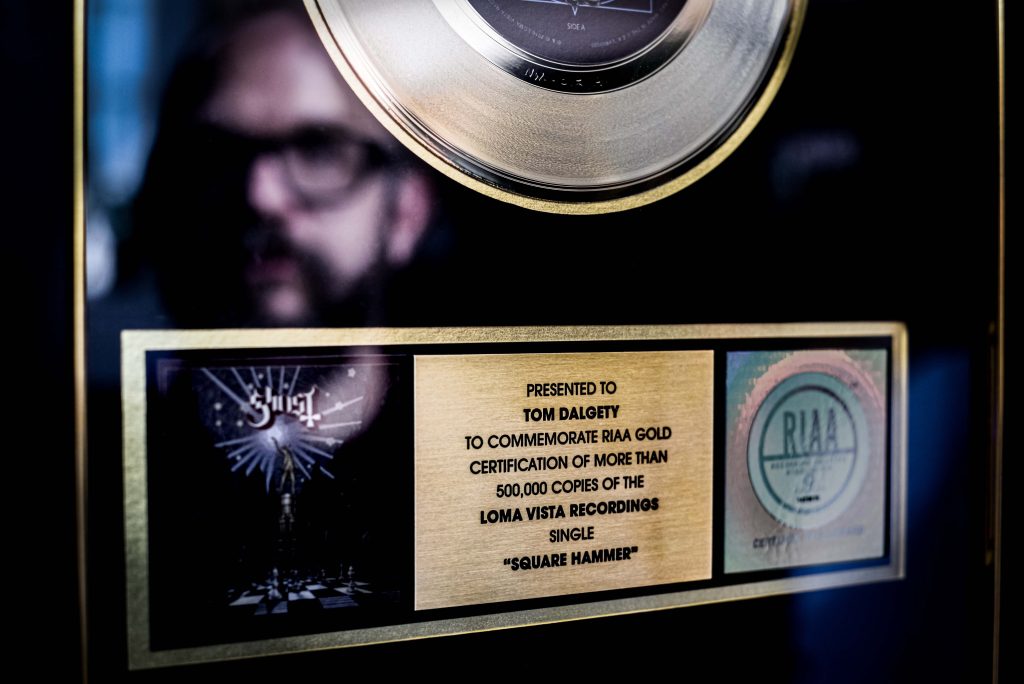
For the Popestar sessions, we recorded in a studio that was in the process of being converted from an old clubhouse. If a band is ever concerned they can’t afford a certain studio or the one they really want is booked up, I tell them that the two game-changing things I’ve recorded and produced were done in very modest surroundings. Popestar and big chunks of the Royal Blood album were done at very humble studios, and they’re two of the most successful things I’ve done.
"The two game-changing things I've recorded and produced were done in very modest surroundings."
After Popestar, we recorded a live album called Ceremony and Devotion, followed by the studio album Prequelle at Decibel Studios in Stockholm. Prequelle became a number-one record and was nominated for Best Rock Album at the Grammys. The lead single, “Rats,” was nominated for Best Rock Song.
Which BOSS pedals did you use to record Ghost?
I used a BOSS Blues Driver on the bass to record “Square Hammer.” Tobias Forge and I really like the raspy growl of The Stranglers’ classic bass tone, and a Blues Driver into an SVT amp will get you there. A lot of the bass sounds on Popestar are all about that. The bass sounds on Prequelle are more inspired by Duff McKagan—brighter and with chorus, but still often using the Blues Driver. The Blues Driver into a SansAmp works great, too.

It’s probably rude not to get the BOSS HM-2 Heavy Metal out when in Sweden. “Rats” is pure HM-2. That gnarly, spiky guitar tone is the Heavy Metal going into a Mesa/Boogie Mark II amp. I also used the MZ-2 Digital Metalizer for wide harmony guitars. That’s a lesser-known vintage BOSS pedal with chorus and doubling modes. I bought mine from a shop in Bristol called Heron Music, which is owned by my friend David Simpson.
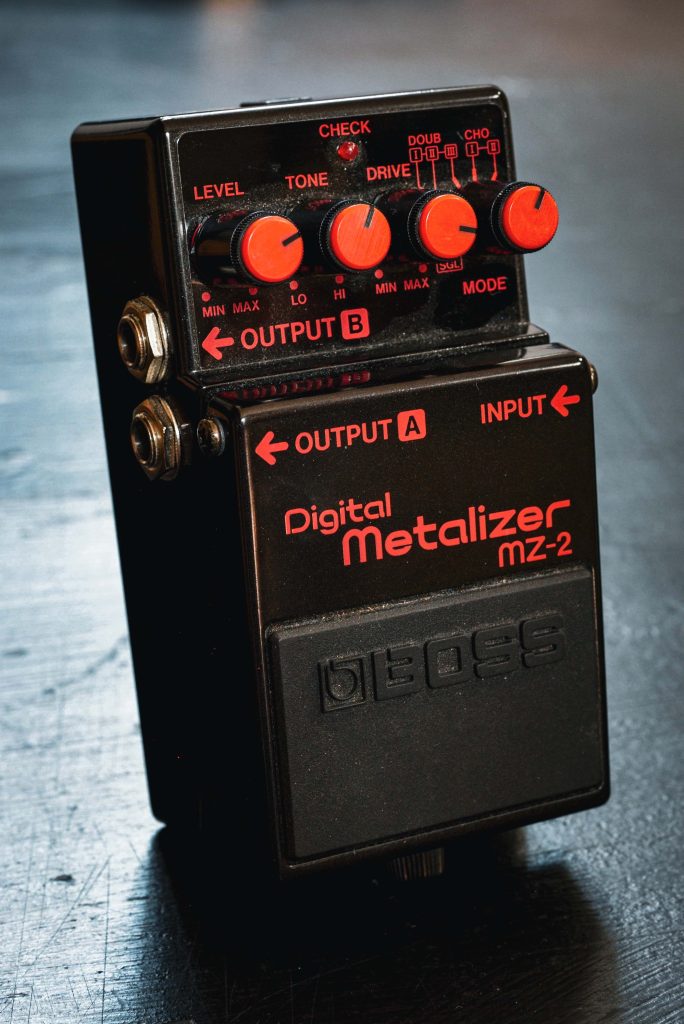
David was Killing Joke guitarist Geordie Walker’s tech. I went into Heron one day, and he told me the MZ-2 was a cool way to get a Geordie-style sound. It’s not exactly his sound—that was created using some obscure, hard-to-find gear—but it’s that kind of thing: wide and chorus-y. I’ve since used the Digital Metalizer on many recordings. My favorite example of the MZ-2 is the guitar solo in the Creeper song “Cry to Heaven,” which is a single from the 2023 album I produced called Sanguivore.
"I’ve used the BOSS MZ-2 Digital Metalizer on many recordings."
The Cult of Chorus
Which BOSS pedals did you use to record The Cult’s Under the Midnight Sun?
Billy Duffy still uses a lot of BOSS pedals, including the DD-3 Digital Delay, JB-2 Angry Driver, DM-2W Delay, and DC-2W Dimension C. “Impermanence” is a good example of some BOSS modulation goodness. There’s wide, washy chorusing on a lot of the things I’ve done with Billy.
The Roland JC-120 Jazz Chorus amp is also a huge part of his signature tone. I mic’d his JC-120 up in stereo with the chorus switched on, which is such a gorgeous sound. I bought a JC-120 years ago because I love all those ‘80s goth guitar tones, and it went full circle because I later sold it to Wayne Hussey of The Mission. I guess it went back to its rightful owner.
How do you like to use the BOSS Waza Craft CE-2W Chorus?
I love that you can run some BOSS pedals in stereo. Ever since working with Killing Joke, I’ve been inspired by those wide, Geordie-style guitar sounds. I use the CE-2W Chorus for that sort of thing. Last year, I recorded with Unto Others from Portland, Oregon, and they love clean chorus guitar. They draw influence from British goth groups like Siouxsie and the Banshees, The Mission, and The Sisters of Mercy.
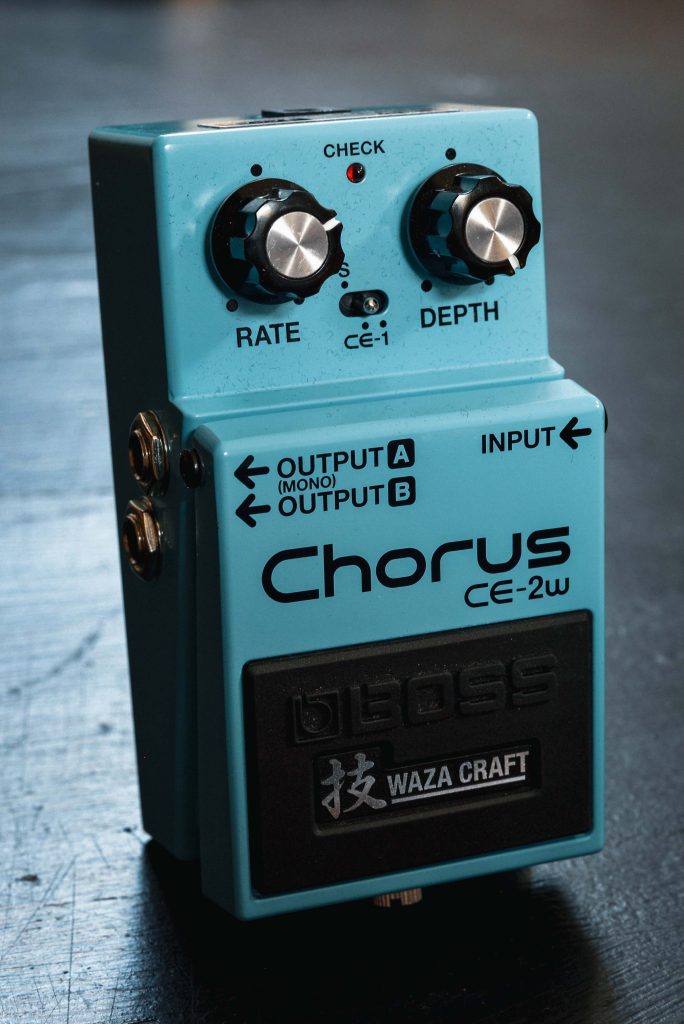
I did a lot of DI guitar for that, mostly with the two outputs of the CE-2W going into two API preamps. I deliberately didn’t want the sound of an amp; I wanted it to be pristine chorus. It wouldn’t sound right for most playing, but that setup was perfect for spindly, fast-picking stuff.
Often, I’ll have the CE-2W Rate all the way down and Depth about two-thirds up, which creates more of a dimensional sound than an obvious wave modulation. I tend to use the CE-2W only for a chorus sound, not the Vibrato mode so much. I just love that crystal-clear BOSS Chorus tone.

Never Underestimate the Chain
What do you like about BOSS compact pedals generally?
Apart from sound and reliability, I love that BOSS controls are clearly and accurately labeled. That’s important to me. I don’t like it when pedal builders use obscure parameter names. Why say things like “poke” and “girth” when you mean treble and gain?
What’s even worse is when knobs aren’t labeled with anything remotely comprehensible. It can be a problem because if you’re recording a musician and they say, “This tone is almost perfect—just add a tiny bit more treble,” you don’t want to be guessing what does what and mess their sound up.
"One of the biggest mistakes guitar players make is trying to emulate the sound of recorded guitar using a live rig."
What’s your top tip for recording guitar?
Be wary of trying to emulate guitar sounds from your favorite albums with just an amp in the room. The recording chain should not be underestimated. For example, you can add a lot more distortion and harmonics with the mic preamp and completely transform the sound of an amp with EQ. So much tone-shaping is done post.
I think the ubiquitous heavy metal scooped-mid guitar tone sounds way better when chopping out midrange on the console rather than using the amp EQ or EQ placed before the amp. EQ-ing at different points in the chain creates completely different results. One of the biggest mistakes guitar players make is trying to emulate the sound of recorded guitar using a live rig.

